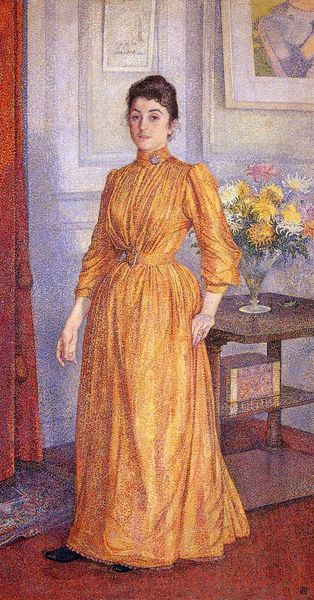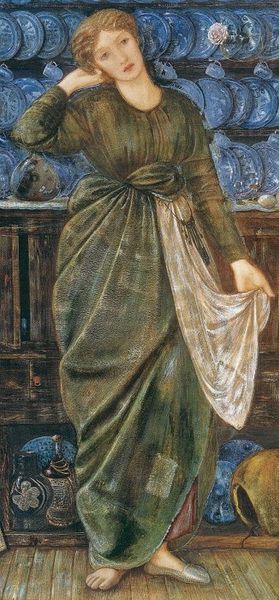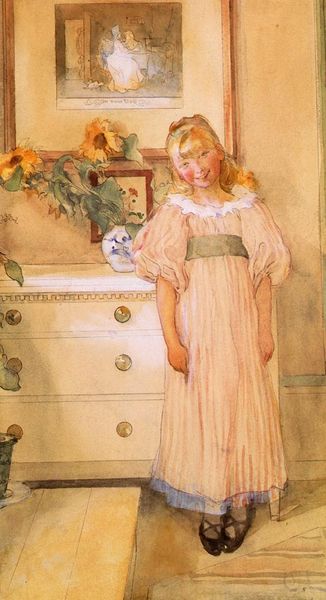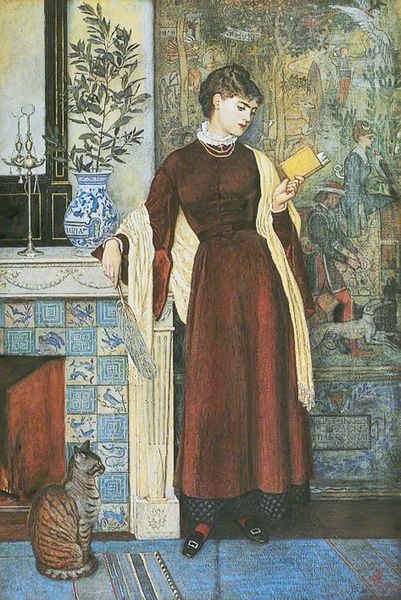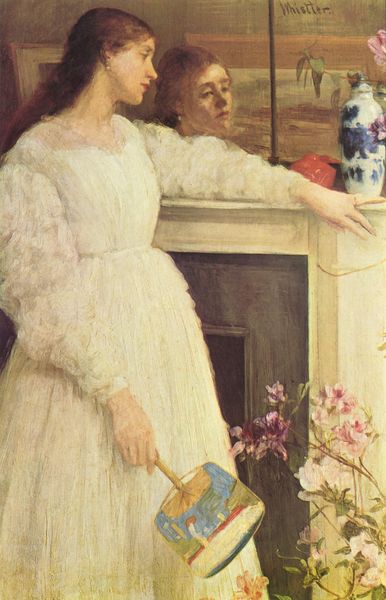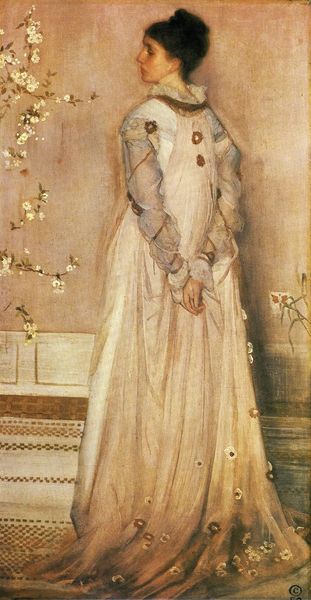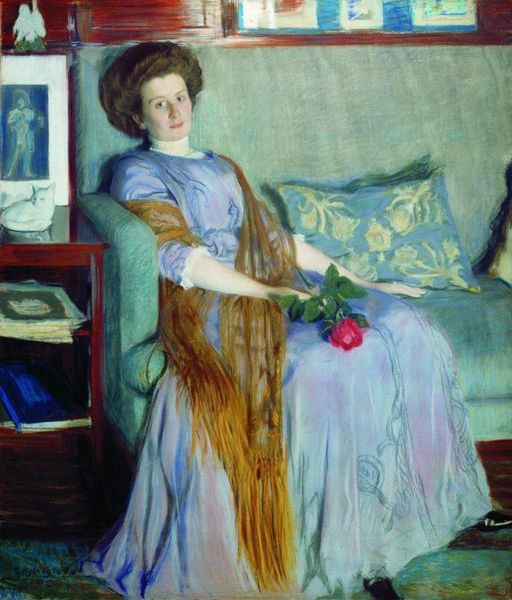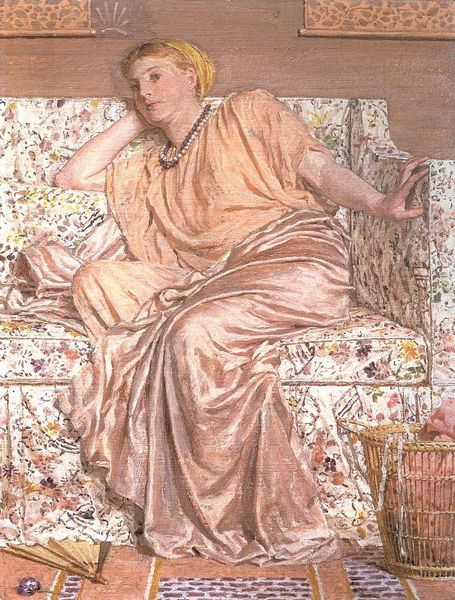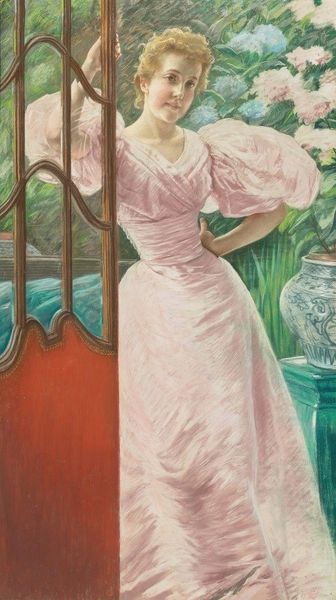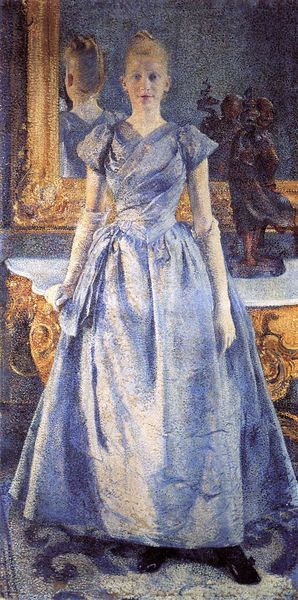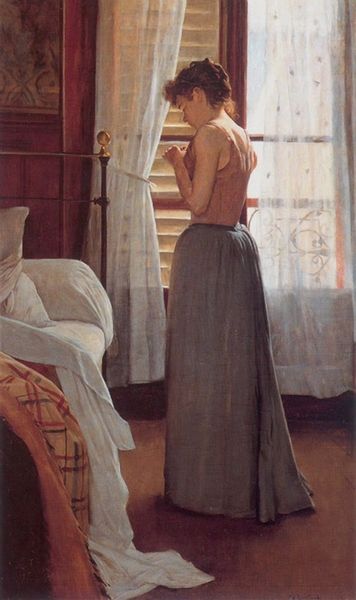
Dimensions: 197 x 114.5 cm
Copyright: Public domain
Editor: Here we have Theo van Rysselberghe's "Portrait of Irma Sethe," an oil on canvas painted in 1894. The painting's pointillist style and the serene expression of the subject create such a tranquil mood, almost as if sound is radiating out from the canvas. What are your thoughts on this portrait? Curator: It’s interesting you mention the radiating sound because that highlights the role of art as a mediator of culture. During this period, musical salons were becoming increasingly important social and cultural spaces for the bourgeoisie. Considering this context, is Irma simply a woman playing the violin, or is she performing a social role, demonstrating the cultural capital of her family? Editor: That's a perspective I hadn't considered. So, you're saying the portrait isn't just about the individual, but about social status? Curator: Precisely. Van Rysselberghe, like many artists of his time, was deeply engaged in depicting modern life. Consider how the stylistic choice of Pointillism itself contributes to this. The painstaking application of individual dots of color can be seen as mirroring the increasing industrialization and mechanization of society. It makes me wonder, did this impact audience perception at the time? Editor: It’s a subtle connection, but so thought-provoking. Does the museum setting play a part in all of this, then? Curator: Absolutely. Museums decide what art is deemed worthy of preservation and display, directly shaping public perception and understanding. The very act of framing this particular scene—a woman playing violin—as 'art' reinforces certain societal values. Think about who typically got to be in museums at the time. Editor: That is something to think about... I didn't anticipate analyzing it this way. Curator: Art offers reflections of both its subject and its observers, now and then. Editor: Thanks, this changed the way I understand it all. Curator: My pleasure, it's vital to keep discussing how these interactions shape what we call art.
Comments
No comments
Be the first to comment and join the conversation on the ultimate creative platform.
